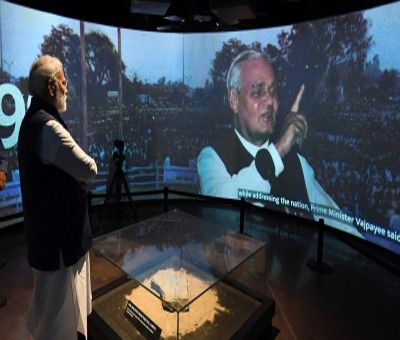
New Delhi, The long-time residence of India's first Prime Minister Jawaharlal Nehru, at Teen Murti Bhavan was converted into the Nehru Memorial Museum after his demise in 1964.
After that in 2016, the Narendra Modi government laid the foundation for building a Prime Ministers' Museum in this campus. Teen Murti Bhavan, where Nehru lived for 16 years from 1948, was built by Robert Tor Russell in 1929-1930 as Flagstaff House, the residence of the Commander-in-Chief of the British Indian Army.
After Nehru's passing away, everything there was kept very meticulously to cherish the memories associated with them. But gradually the number of people coming here was decreasing.
Now after its renovation, about 80,000 people visited this museum in just four months. Along with renovation of the entire building, every room and every gallery has been made completely digital with modern technology. The content has been completely digitised especially to give information to the youth about the Constitution of India, the development work of the Prime Ministers, their living conditions and things related to their life, which you can listen and read.
Nehru's bedroom, his study room, guest room and his daughter and subsequent Prime Minister's Indira Gandhi's childhood rooms have also been kept completely intact in this building. All these rooms have not been tampered with except for cleanliness.
Toshakhana is also attached with the Nehru Museum. In this, Nehru's gifts from abroad, already kept there, were now open for public viewing. Now in this, gifts presented abroad to three other Prime Ministers -- Atal Bihari Vajpayee, Manmohan Singh, Narendra Modi -- have also been kept to be seen by the general public. The thinking of the Modi government is that along with the youth, the general public should also get to know the living conditions of the first Prime Minister of India, his work, thoughts and his contribution. Therefore, the renovation of the already built Nehru Memorial Museum has been done specially.


.jpeg)

